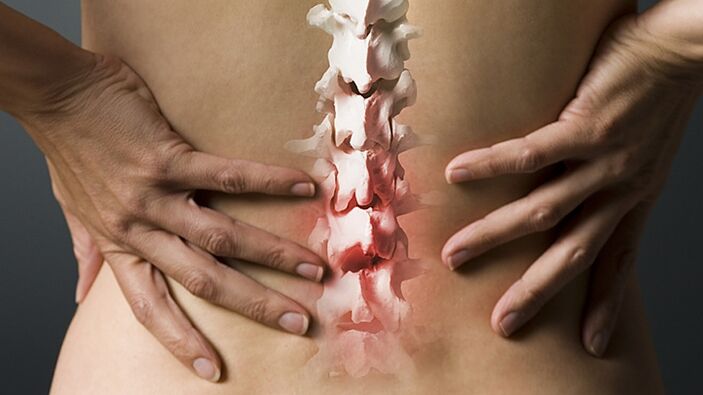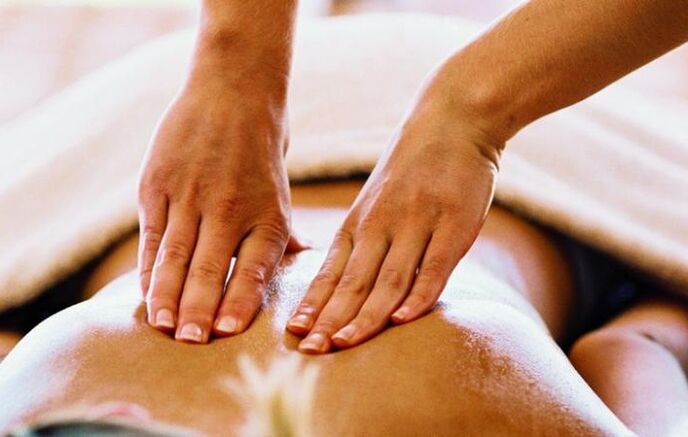
Spinal osteochondrosis is a disease characterized by degenerative-dystrophic changes in the vertebrae and intervertebral discs.
Scientists call this disease the "disease of civilization, " as it is associated with a person's attitude and an ever-increasing load on the spine in the modern world. Usually, osteochondrosis begins to develop in young people 20-25 years old.
Causes
The exact cause of the development of spinal osteochondrosis has not been determined. Experts note the factors that contribute to its development.
Traumatic factors. Excessive continuous loads (microtrauma) of the spine contribute to accelerated consumption of spinal discs. Antiphysiological postures (working in a bent position for a long time, a long stay in one position) lead to the formation of subluxations in the intervertebral joints.
Pathology of the development of the musculoskeletal system. Flat feet, shortening of one leg, vertebral lumbar and other similar pathologies increase the load on the spine and consequently accelerate the degenerative processes.
Age factor. The development of osteochondrosis of the spine is considered by many doctors as a manifestation of the natural aging of the human body.
Vascular factors. A relationship has been established between a decrease in blood flow (ischemic processes) and an acceleration of pathological processes in the spine.
Factor of changes in hormonal levels. Natural hormonal changes in the body (pregnancy, lactation, menopause, menopause) cause an increase in degenerative processes.
Endocrine-hormonal disease factor. Diseases such as obesity, diabetes mellitus, myxedema (inflammatory lesion of the thyroid gland) and others contribute to the development of osteochondrosis of the spine.
Classification and symptoms
Symptoms depend on the localization of the pathological process.
Osteochondrosis of the cervical spine. The cervical spine contains blood vessels that feed the brain. With degenerative changes in this section, the organs of the head are not adequately supplied with blood. This often leads to cerebrovascular accidents.
The main symptom of cervical spine osteochondrosis is headache. This pain is usually permanent, worse in the morning and with movement. It arises in the back of the head and leaves the parietal-temporal region. Pain syndrome is often accompanied by dizziness, flashing before the eyes of "flies", colored spots.
In addition, nerve tightening often contributes to the onset of headache, sore throat and neck pain. Pain syndrome sometimes grabs the arm, the shoulder. It can be weakened or intensified by turning the head or changing the position of the body.
Signs of osteochondrosis of the cervical spine include:
- blood pressure fluctuations;
- tinnitus, hearing impairment;
- visual impairment;
- violation of coordination of movements and gait;
- hoarseness or weakening of the voice;
- tooth decay;
- snoring during sleep.
Thoracic spine osteochondrosis. Manifestations can be different and depend on the localization of the disease, the degree of its severity. Compression of the nerve roots of the chest leads to intercostal neuralgia. Appears with acute chest pain, which becomes stronger with sucking, some movements, coughing and laughing. Pain syndrome intensifies after a long stay of a person in a position or after physical exercise. Osteochondrosis of the thoracic spine is often the cause of diseases of the stomach, lungs, heart and other human organs.
Lumbar spine osteochondrosis. It often strikes people who spend a long time in "sedentary work" (drivers working on the computer).
A symptom of lumbar spine osteochondrosis is a painful character, which is intensified by sudden movements (weight lifting, sneezing, coughing) and long stay in one position. After a bent position, it is difficult for the patient to direct the back, sometimes severe pain also interferes with movement. The pain is significantly reduced in the horizontal position of the body. Sitting or lying on a healthy side brings relief.
Pain syndrome in lumbar spine osteochondrosis is often localized in the lower back, radiating to the legs, sacrum, and often to the pelvic organs. Overloading the spine muscles as a result of difficult movements, lifting weights causes back pain. Lumbar osteochondrosis of the spine is often manifested by impaired sensitivity, numbness in the area of pain. The patient may experience a tingling sensation, "running crawling". Symptoms are often accompanied by spasms of the arteries of the legs, a drop in the temperature of the skin on the feet, and a cooling of the feet. Some patients have dryness and itching of the skin, sweating disorders.
If you think you have osteochondrosis of the spine and symptoms characteristic of this disease, then you should seek the advice of an orthopedist or therapist.
Treatment

The therapy of this disease aims at eliminating the pain, restoring the functions of the spine, preventing the development of dystrophic pathologies in the spine.
The duration of treatment for osteochondrosis of the spine depends on the severity of the disease, the age of the patient and the methods of treatment.
In the complex treatment of the disease, the following methods of therapy are used.
- Physiotherapy. It is one of the main methods of treating osteochondrosis. Physiotherapy exercises include joint gymnastics and exercises on rehabilitation equipment. Its result is normalization of intervertebral disc nutrition, metabolism, formation of proper muscle corset and a reduction of load on the spine.
- Physiotherapy. This method uses the effects on the body of a laser, ultrasound, magnetic field, low frequency current for treatment. Due to the use of physiotherapy, the duration of treatment is significantly reduced and its effectiveness is increased.
- Massage. An effective method for relieving muscle pain, tension, improving blood circulation, strengthening the overall body.
- Manual therapy. This method of treating osteochondrosis of the spine makes it possible to restore normal organ mobility, improve blood supply, lymphatic circulation, and prevent disease exacerbation.
- Spinal traction. With the help of special equipment the intervertebral spaces are enlarged. This helps to restore the proper shape of the spine, to eliminate pain.
- Reflexology. It consists in the influence of special techniques on acupuncture points and reflexogenic areas of the human body.
Surgical treatment of spinal osteochondrosis is performed with the ineffectiveness of conservative therapy or for special indications. The amount of surgery depends on the extent of the lesion and the symptoms of the disease.



































